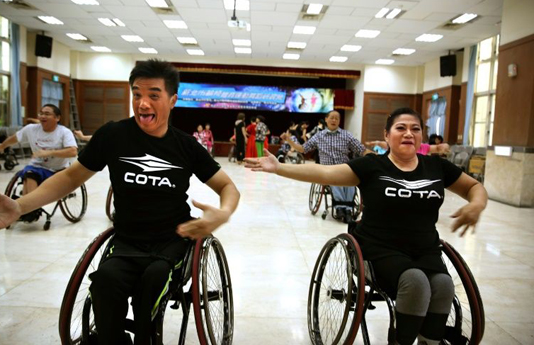TAIPEI, Nov 30, 2019 (BSS/AFP) – Taiwanese athletes Vincent Kuo and Ivy
Huang each discovered an electric talent for wheelchair dancing on their own
— but it was when they were paired up together that the sparks really flew.
Part of the island’s last generation of polio survivors, they have spent
years perfecting their dance routines.
Currently ranked world number two, the recently-married couple are in
Germany this weekend to compete in the World Para Dance Sport Championship.
“I have always been interested in sports even if I can’t play them because
of my disabilities,” Kuo told AFP during a break from practicing Latin dance
moves with his wife in New Taipei City.
Around 50 wheelchair dancers across Taiwan meet regularly to exercise and
socialise, including Kuo and Huang, both 48 years old.
Their dance partners are non-disabled volunteers who either perform
standing up — a style known as “Combi” — or also using a wheelchair, called
“Duo”.
“Through dance, we got to know a lot of good friends,” said Huang.
“Especially after a performance we’ll get together and have a feast, and be
very happy.”
Huang and Kuo, who can walk with the help of crutches but use wheelchairs
for dancing, attended these meetings for more than a decade before they
started performing together and eventually fell in love.
Huang said it was Kuo’s sense of humour that caught her attention.
“He was always funny when he spoke,” she said.
“My first impression of Ivy was that she was very cute because she walks
like a penguin,” Kuo added, the pair bursting into laughter at the
description.
– Tough competition –
The couple have been practising for months after work for the impending
competition in Bonn, where they will join 230 athletes from 26 countries in
the sport’s marquee event.
Kuo and Huang will both compete in the Duo category while Kuo will also
compete in Combi with Lydia Chang, a non-disabled dancer and the team coach.
Many of their opponents are from teams with far more funds.
“Europe has the best dancers, and in Asia there is South Korea,” Chang
said. “But we owe it to ourselves to go, to see what we can achieve.”
Huang, who works for Taipei’s city government by day, says she fears a
future when dancing may not be possible.
“For us polio patients, physical deterioration can happen quite quickly,”
she said. “We are hoping while we can still dance… to hold on to our good
rankings.”
Sweden first developed wheelchair dancing as a recreational and
rehabilitation sport in 1968, and hosted its first international competition
nine years later.
The first World Championship was held in Japan in 1998, while Taiwan hosted
the first ever Asian championship in 2016.
Since then, the annual Beigang Para Dance Sport Open in central Taiwan has
attracted competitors from more than 18 countries and raised Taiwan’s profile
in the international arena.
“Technique-wise, we are on par with the rest of the world,” said Tsai Hsiu-
Hui, who was one of the island’s first wheelchair dance instructors.
“But we tend to be more reserved in showing our emotions… especially
Latin dance (where) we need to display our feelings,” Tsai added.



